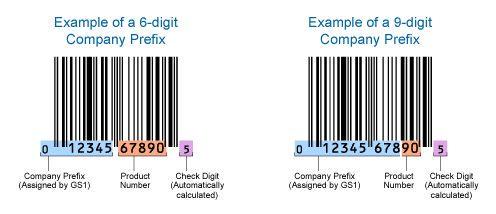Introduction:
The 12-digit numerical identifier for retail products is encoded using the Universal Product Code (UPC), a barcode symbol that can be scanned. It was first used to identify products in the 1970s and has since evolved into a universal standard. Inventory management systems are computer-based tools that assist businesses in keeping track of their merchandise, stock levels, and sales information. Every product should have a unique UPC to be identified. There are a number of sellers selling UPCs. This article will examine the advantages, difficulties, and restrictions of UPC in inventory management systems.
The Benefits of Using UPC in Inventory Management:
Organizations can bring numerous benefits by using UPC codes in their inventory management systems. First of all, it can increase data management and inventory tracking accuracy. Retailers may quickly and accurately record transactions and update their inventory levels by scanning UPC codes at the point of sale. As a result, human data entry is no longer necessary, lowering the possibility of errors and enhancing data accuracy.
Secondly, UPC codes can make the inventory management process more effective. Retailers can save their time and resources needed to manage their inventory by automating the data collection process. Real-time data tracking also enables businesses to react to demand changes rapidly, avoiding overstocking or stock shortages.
Thirdly, UPC codes can facilitate better product monitoring, making it simpler for retailers to monitor the flow of goods across their supply chain. As a result, businesses may be better able to control their inventory levels and decide whether to place product reorders.
Fourthly, UPC codes give businesses a consistent way to identify and monitor products, which helps improve data management. By lowering the possibility of errors and making it simpler for businesses to access and analyze their data, this can assist to streamline the data management process.

How UPC Works in Inventory Management:
At the point of sale, barcode scanners read UPC codes. The inventory levels and sales data are updated using the scanned information after which it is automatically uploaded to the inventory management system. Since this procedure may be carried out in real-time, businesses are able to react swiftly to changes in demand.
Utilizing UPC in Inventory Management requires integration with inventory management software. Organizations may automate the data gathering process thanks to this integration, which lowers the need for manual data entry and boosts data accuracy.
Another crucial aspect of employing UPC in inventory management is real-time data tracking. Businesses may react rapidly to changes in demand and decide when to reorder products by automatically updating inventory levels and sales data in real-time.
Challenges and Limitations of UPC in Inventory Management:
Utilizing UPC in inventory management comes with a number of difficulties and restrictions. First and foremost, it’s critical for businesses to keep their UPC data current. This can be a time-consuming operation, and data inaccuracies can have a big impact on data management and inventory tracking.
Complex inventory management systems can be difficult for the businesses using UPC. This is due to the possibility that some commodities, such as perishables or those with limited shelf life may not be able to be tracked using UPC codes.
Last but not least, maintaining data security is a top priority for businesses employing UPC for inventory management. Organizations must make sure that sensitive data is kept private and that their data is protected from illegal access.
Conclusion:
In conclusion, the incorporation of UPC into inventory management systems can help firms in a variety of ways, including through improved data management, accuracy, and efficiency. Organizations must take into account UPC’s drawbacks and difficulties, such as the need to manage complicated inventory systems, keep UPC data updated, and ensure data security. Organizations can have a better understanding of the potential advantages and restrictions of employing UPC in inventory management by looking at real-world case studies.





